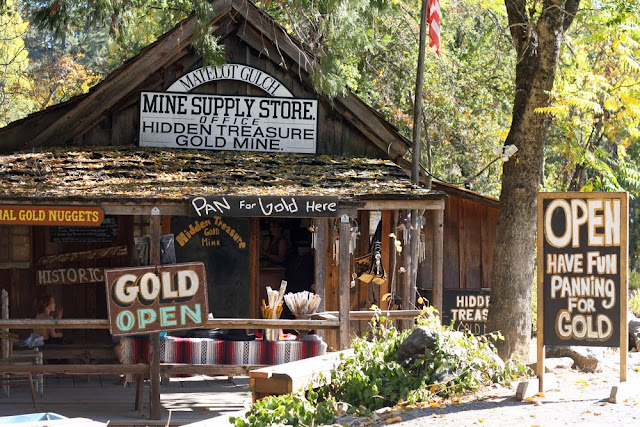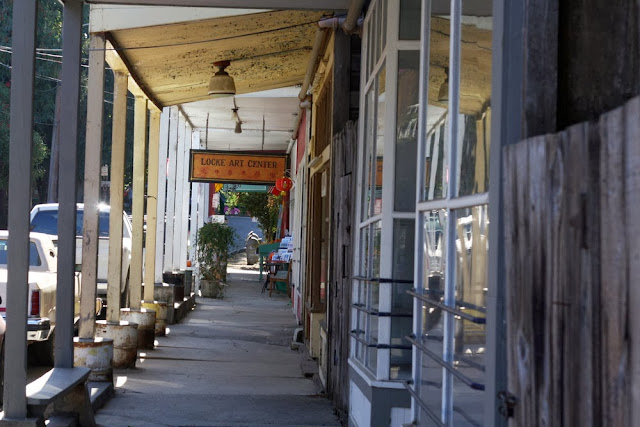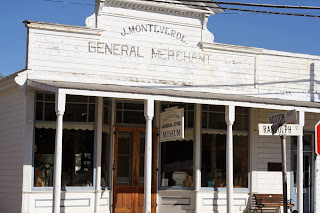This post about an October road trip is embarrassingly late. We're playing catch up.
To celebrate my birthday, Ben planned a weekend for us visiting the former gold-rush towns in the Sierra Nevada foothills.
We first drove through the California Delta, the expansive inland river delta formed by the Sacramento and San Joaquin rivers. The small delta towns attracted migrant workers from Mexico and Asia in the late 19th and early 20th centuries, and today much of the area remains dedicated to agriculture.
Of particular note is the town of Locke, which claims to be the only town in the United States built exclusively by the Chinese for the Chinese. From 1913 until 1952, it was illegal for Chinese, Indian, Japanese and Korean immigrants to own land in California. To circumvent this restriction, a group of Chinese merchants approached a local landowner, named George Locke, about building on his land. The town they created — Lockeport, later Locke — still exists, with many of the original buildings still standing.
After lunch at a biker bar in Locke, we headed northwest toward Amador County. Ever since we attended the Vintners Market in San Francisco last year, I had been wanting to visit Amador, one of California's newest wine regions. We had purchased a bottle from one of the Amador vineyards, and the owner had encouraged us to come visit.
We were really impressed with the wines at two of the wineries we visited: Jeff Runquist Wines and Cooper Vineyards (we even joined the Runquist wine club). Not only were the wines good, but they were reasonably priced (I think the most expensive bottle was about $30) and the tastings were free (a welcome break from some of the overpriced tastings we've encountered recently).
The New Englander in me loved all of the foliage. San Francisco doesn't change color in the fall.
And it wasn't just the foliage that reminded me of New England. Couldn't this church be right out of small-town Vermont? Instead, it's the California town of Sutter Creek, where we stayed in a cute bed and breakfast.
The next morning we headed south on Route 49, a historic highway that connects many of the former mining towns. We pulled in at a few "ghost towns" before arriving at Murphys, once home to one of California's most bountiful gold mines. During one winter, $5 million worth of gold was mined from a four-acre plot. [1] Today it's an upscale town with a few old-time touches, a beautiful spot to eat and wander.
Our primary destination for the day was Columbia State Historic Park, a Gold Rush town that wasn't abandoned or rebuilt, but preserved as a historic site. A group of prospectors discovered gold in Columbia on March 27, 1850, and by 1852, the town housed more than 150 shops and saloons, including a meeting house and three churches. The population included a sizable number of Chinese, French, Italian, Irish, German and Jewish miners. A fire destroyed the town in 1854 and it was rebuilt with locally made brick and large iron shutters; the resulting style of architecture is characteristic of Gold Rush towns. When another fire struck in 1857, only the brick buildings survived.
 By 1853, an estimated 25,000 to 30,000 people called Columbia home, making it one of the largest cities in California. Over the next half-century, the miners unearthed as much as $150 million of gold, which helped finance the U.S. government and Union Army during the Civil War. The Wells Fargo scale in Columbia was used to weigh more than 1.4 million ounces of gold. It was so precise it could weigh a signature in pencil on a piece of paper.
By 1853, an estimated 25,000 to 30,000 people called Columbia home, making it one of the largest cities in California. Over the next half-century, the miners unearthed as much as $150 million of gold, which helped finance the U.S. government and Union Army during the Civil War. The Wells Fargo scale in Columbia was used to weigh more than 1.4 million ounces of gold. It was so precise it could weigh a signature in pencil on a piece of paper.The town began to decline in the late 1860s, before finally becoming a state park in 1945. It houses the largest single collection of existing Gold Rush-era structures. [2]
- Steph
Sources:
[1] Murphys History, Visit Murphys
[2] Columbia State Historic Park brochure
























No comments:
Post a Comment
All comments are moderated before publishing. Comments with links (unless directly relevant to the post) will not be approved. No spam, please.